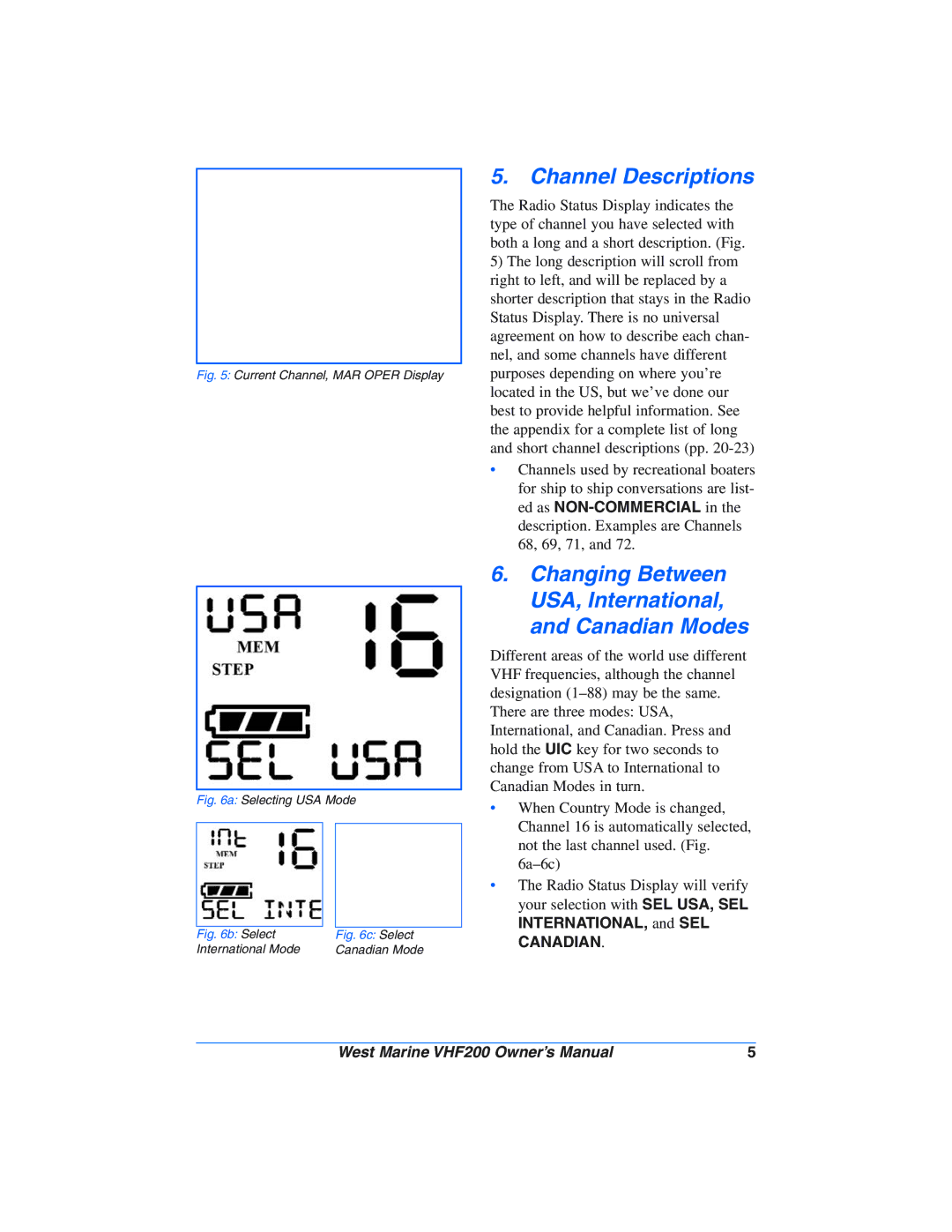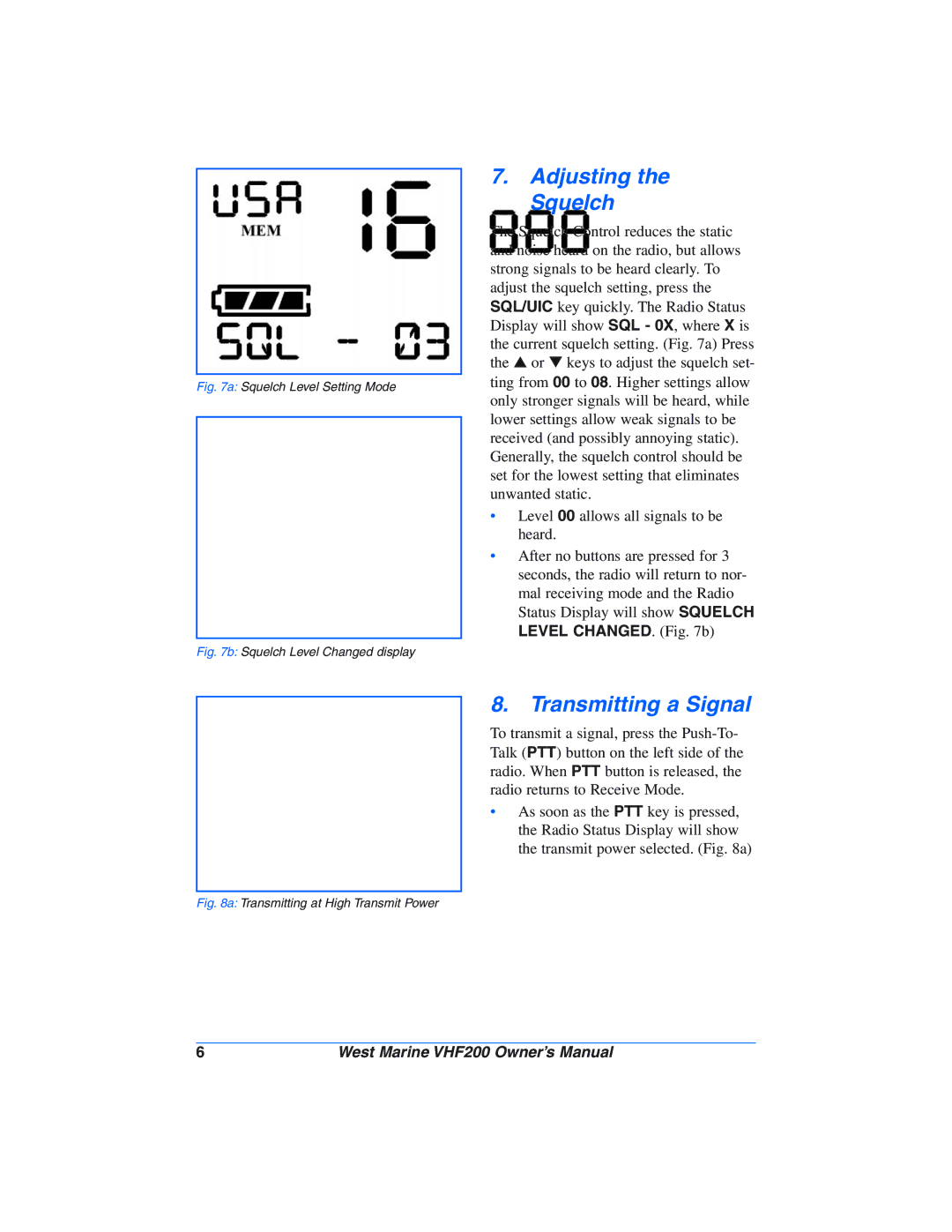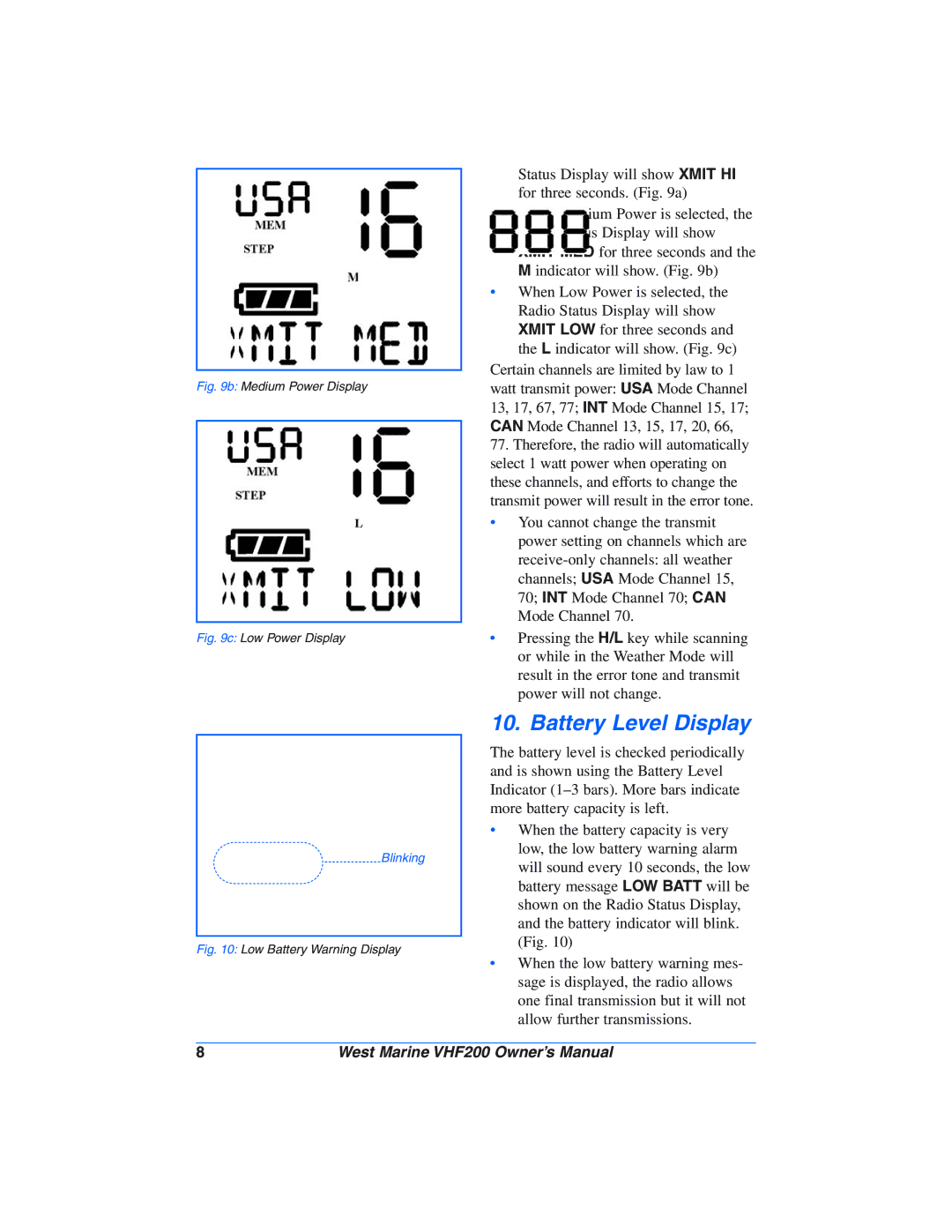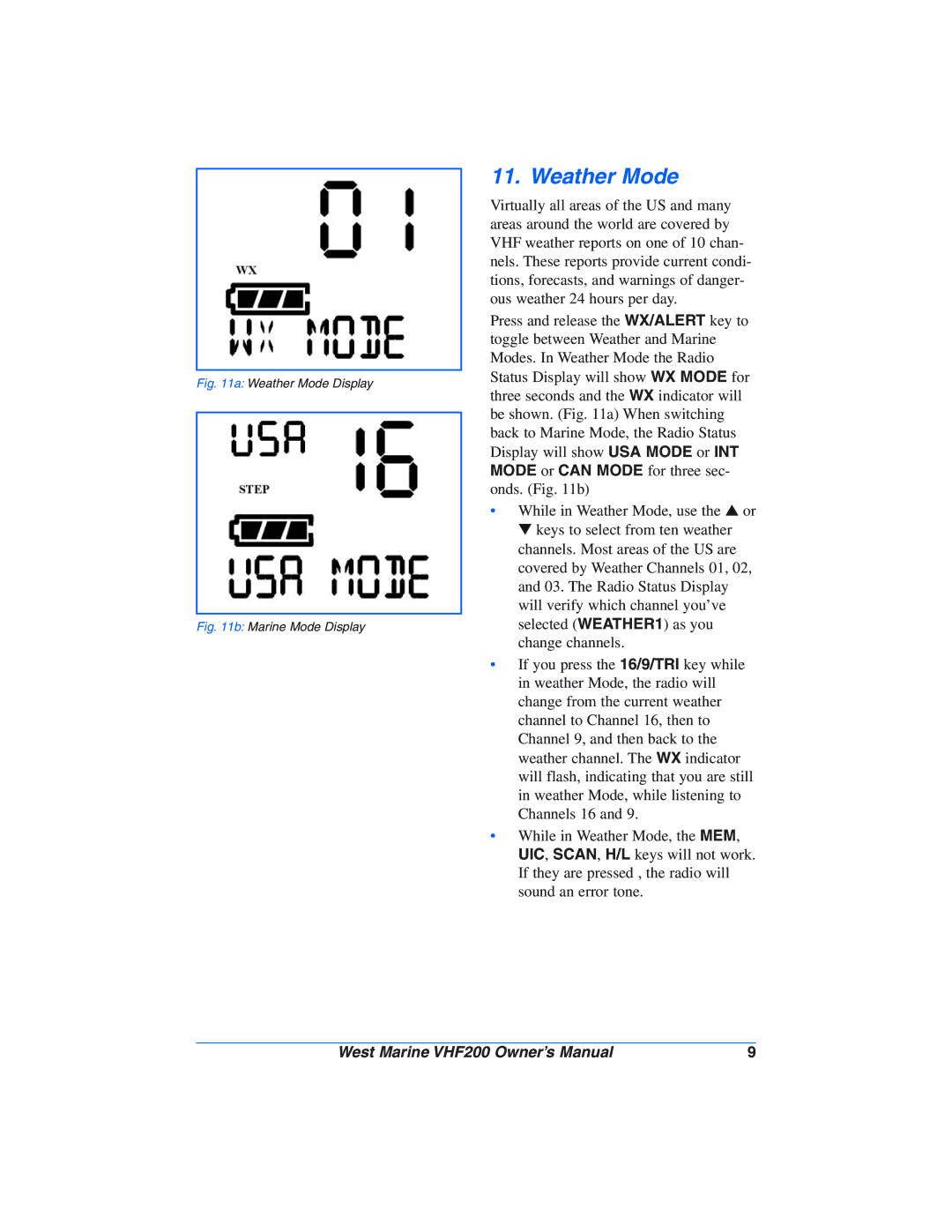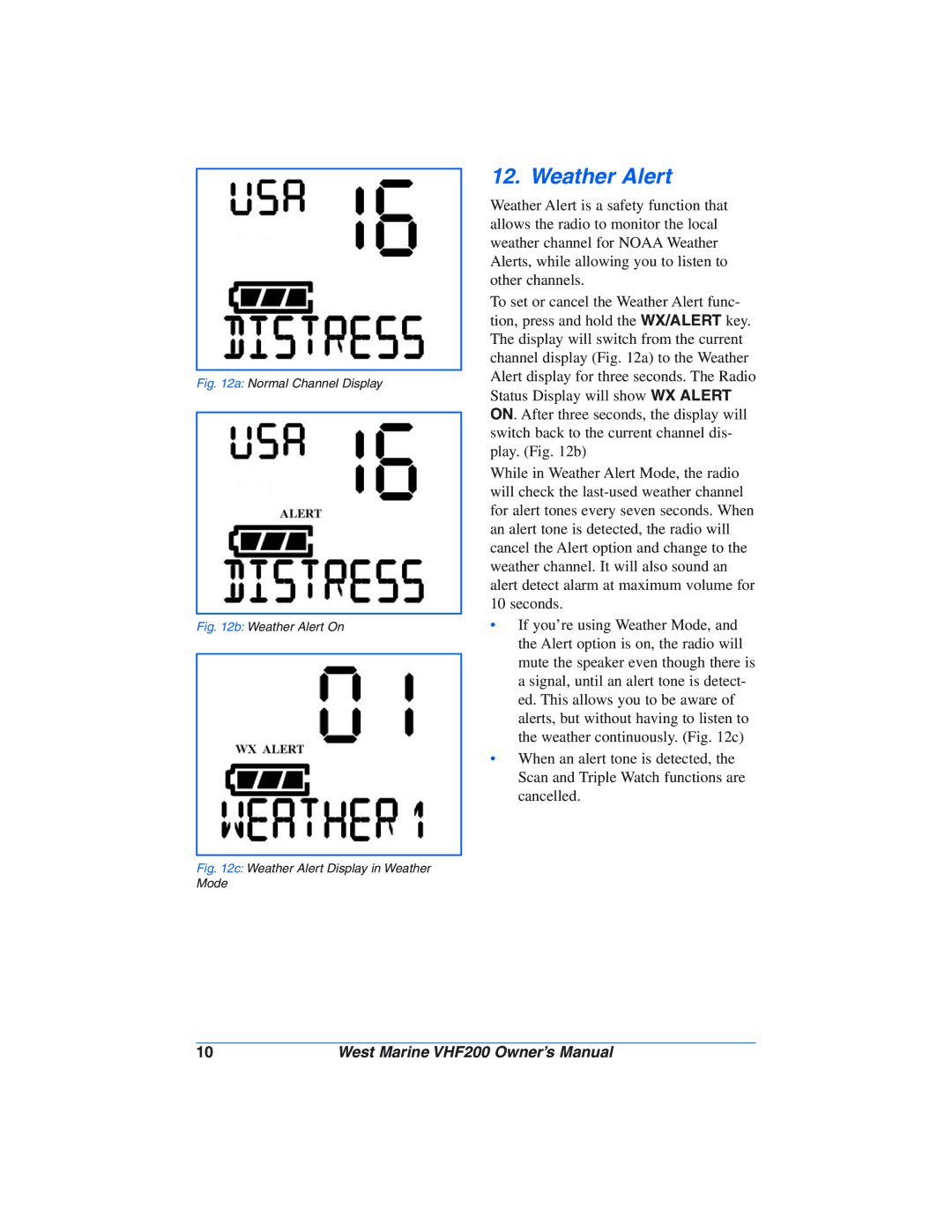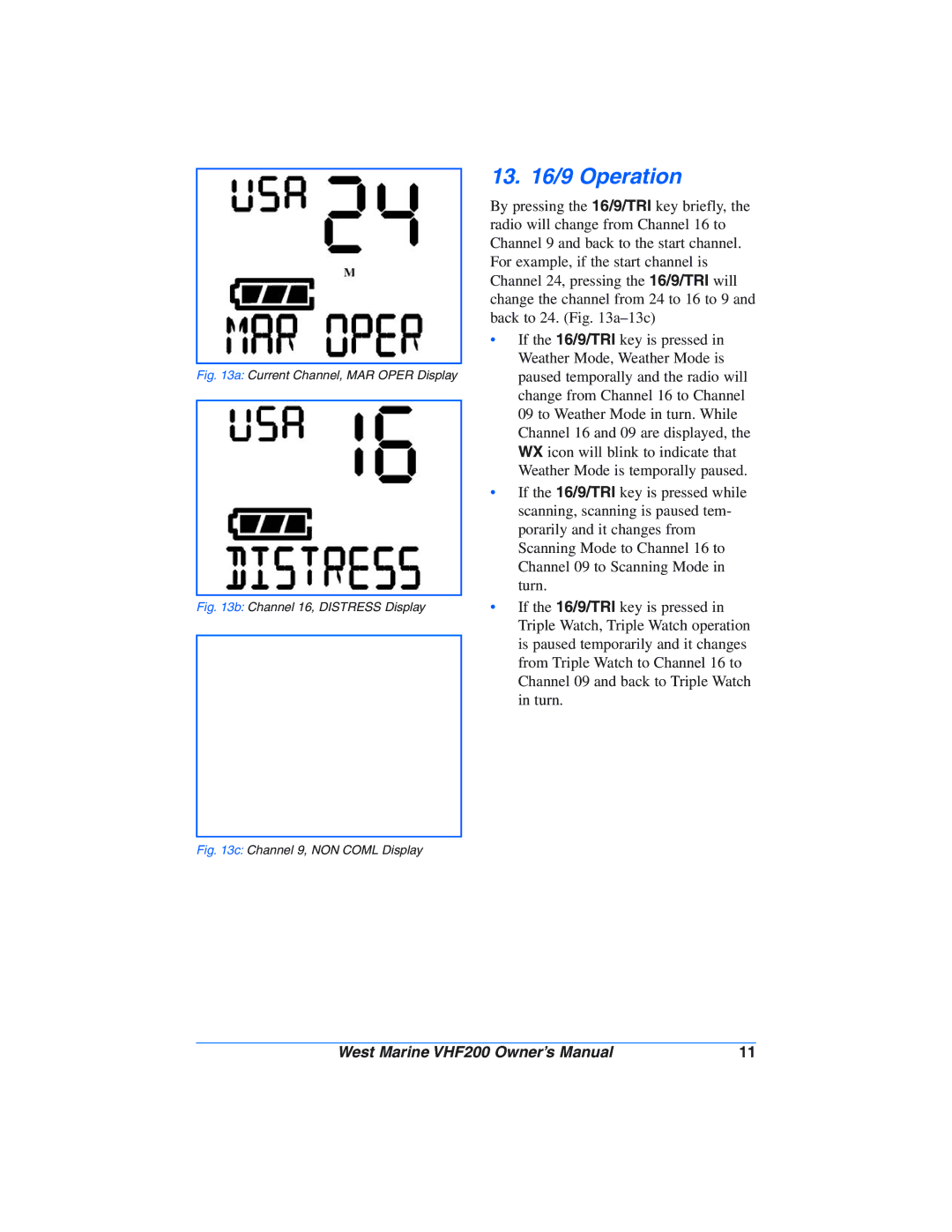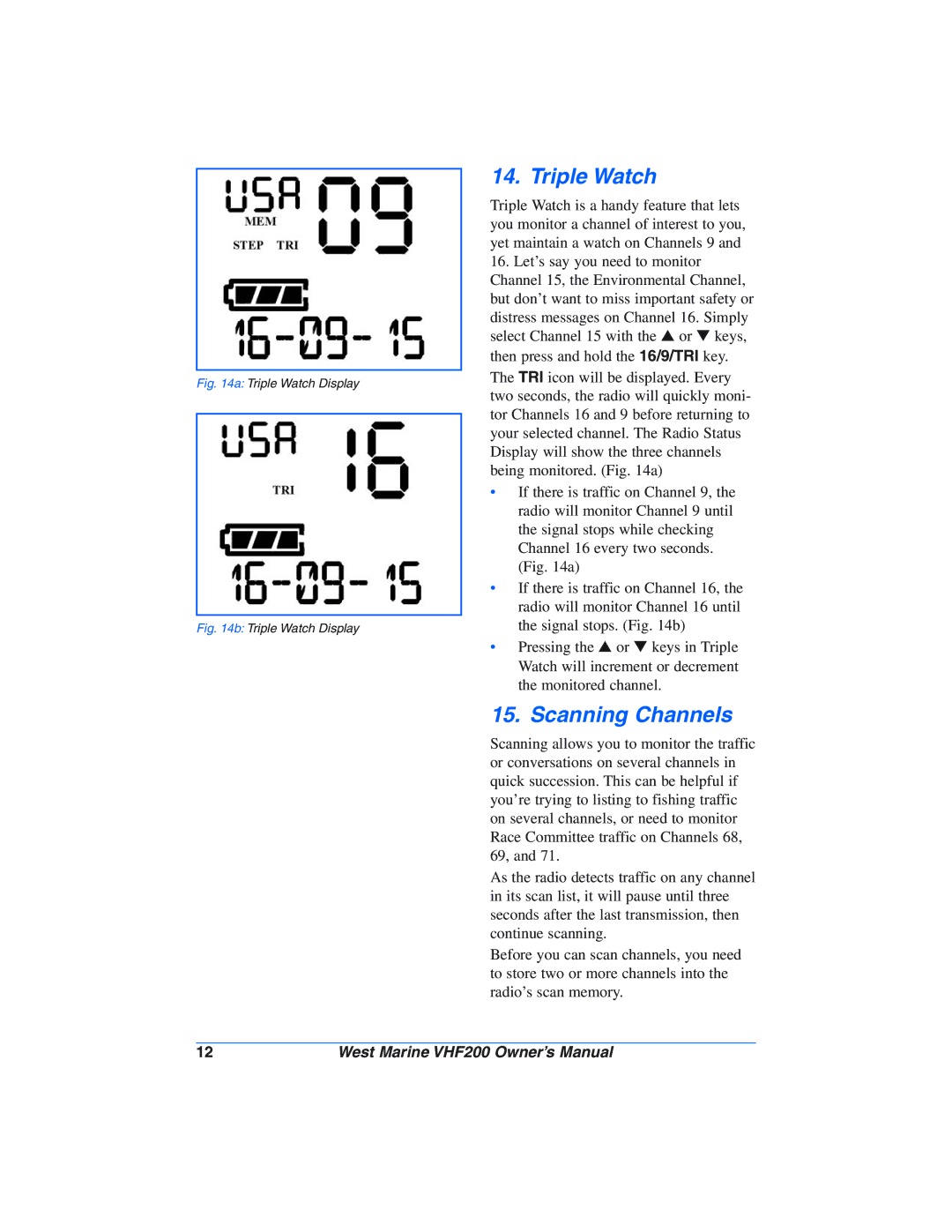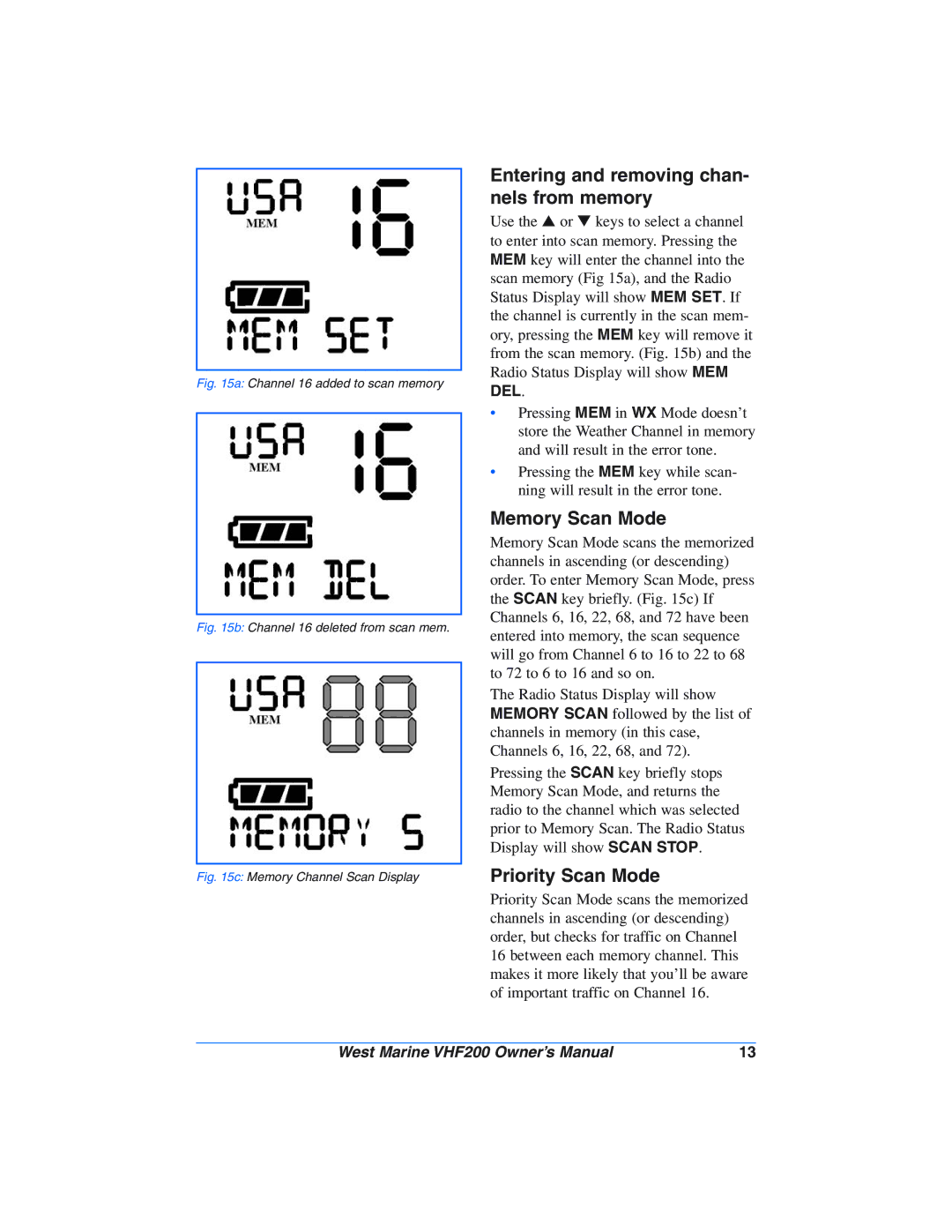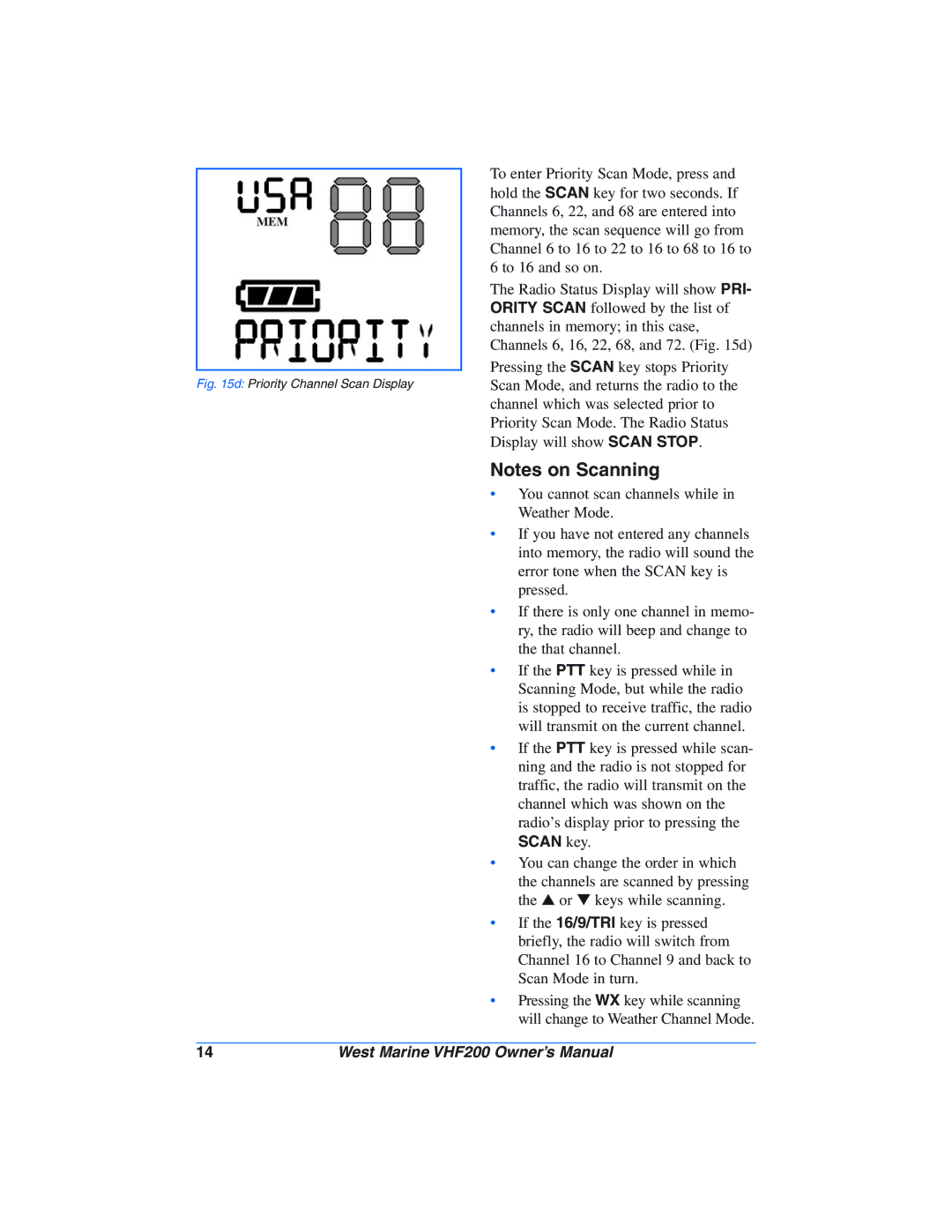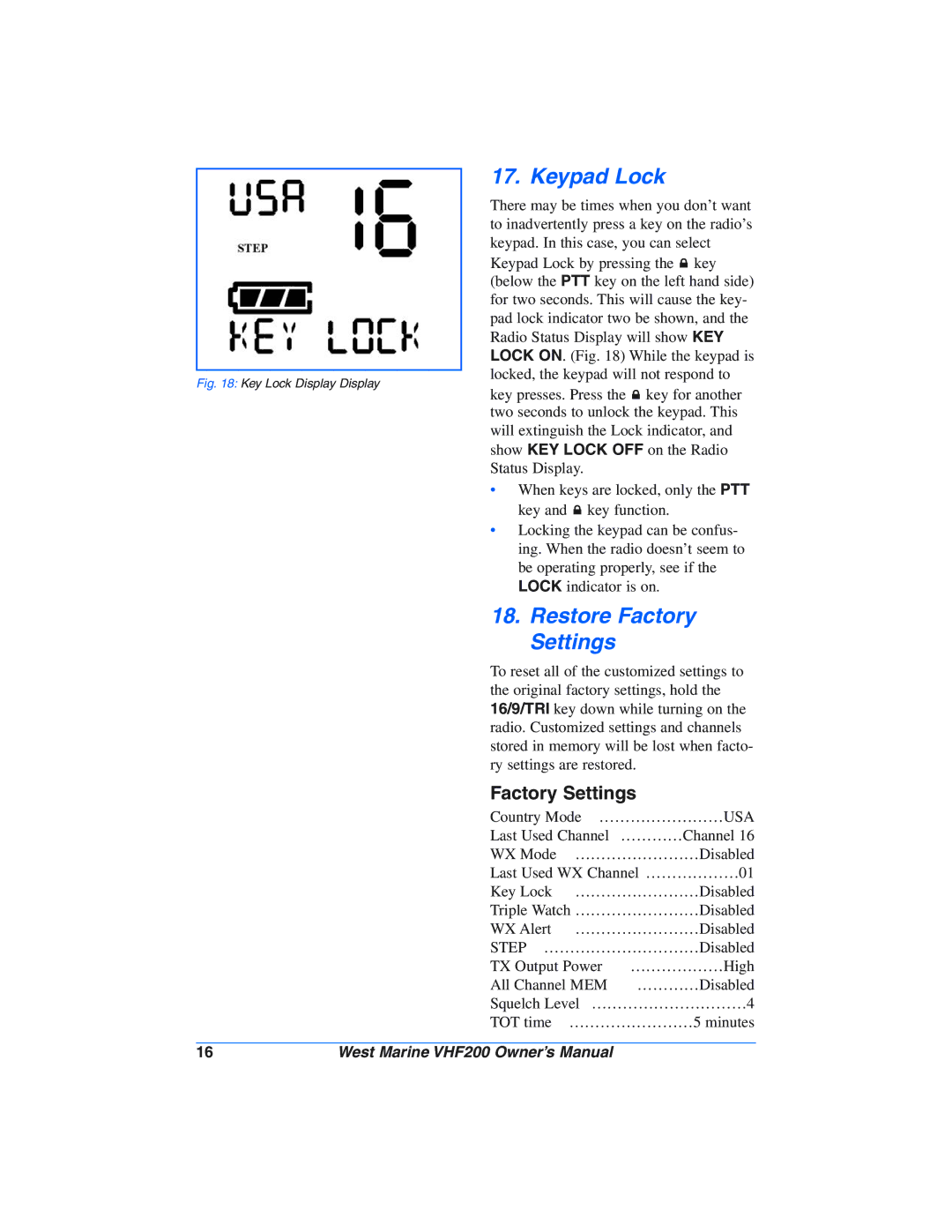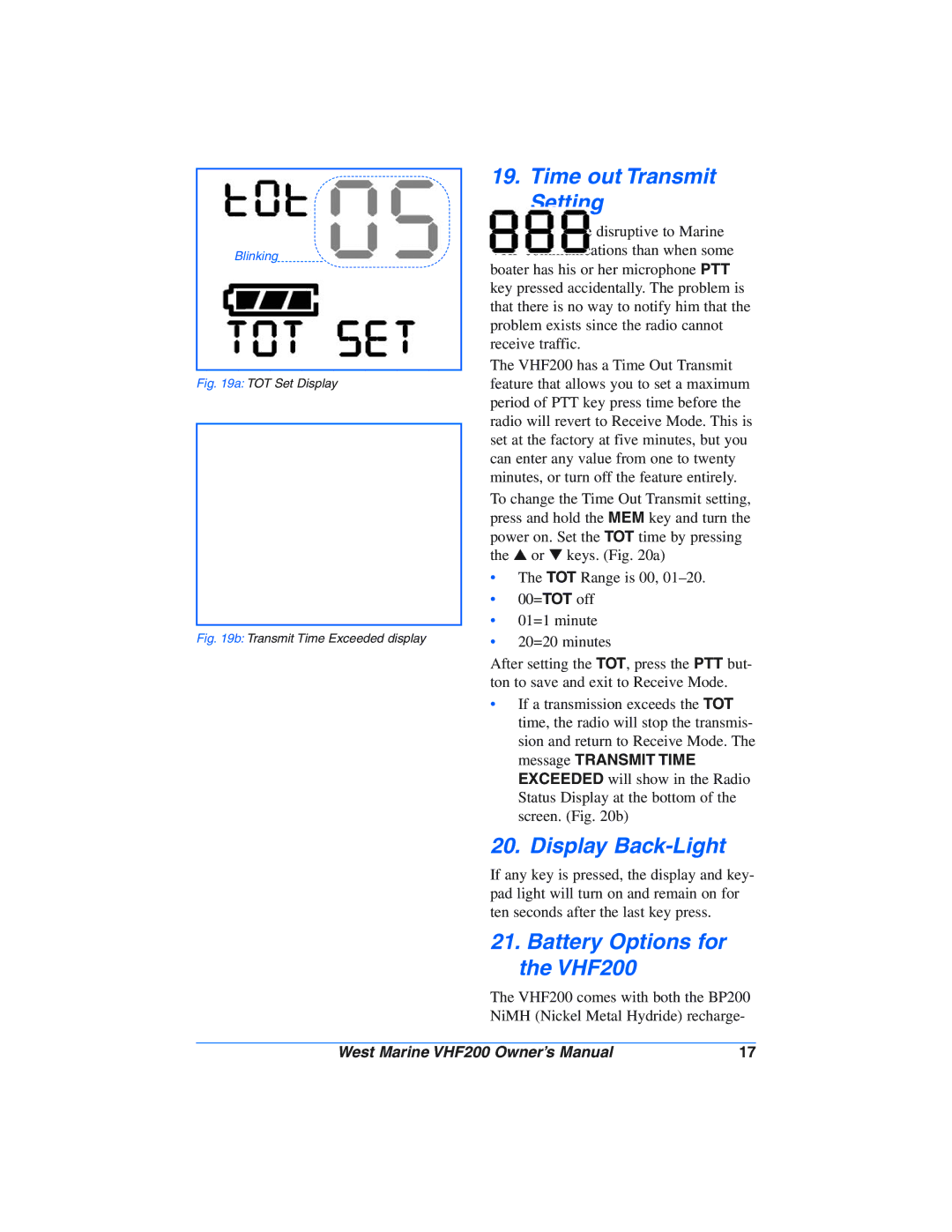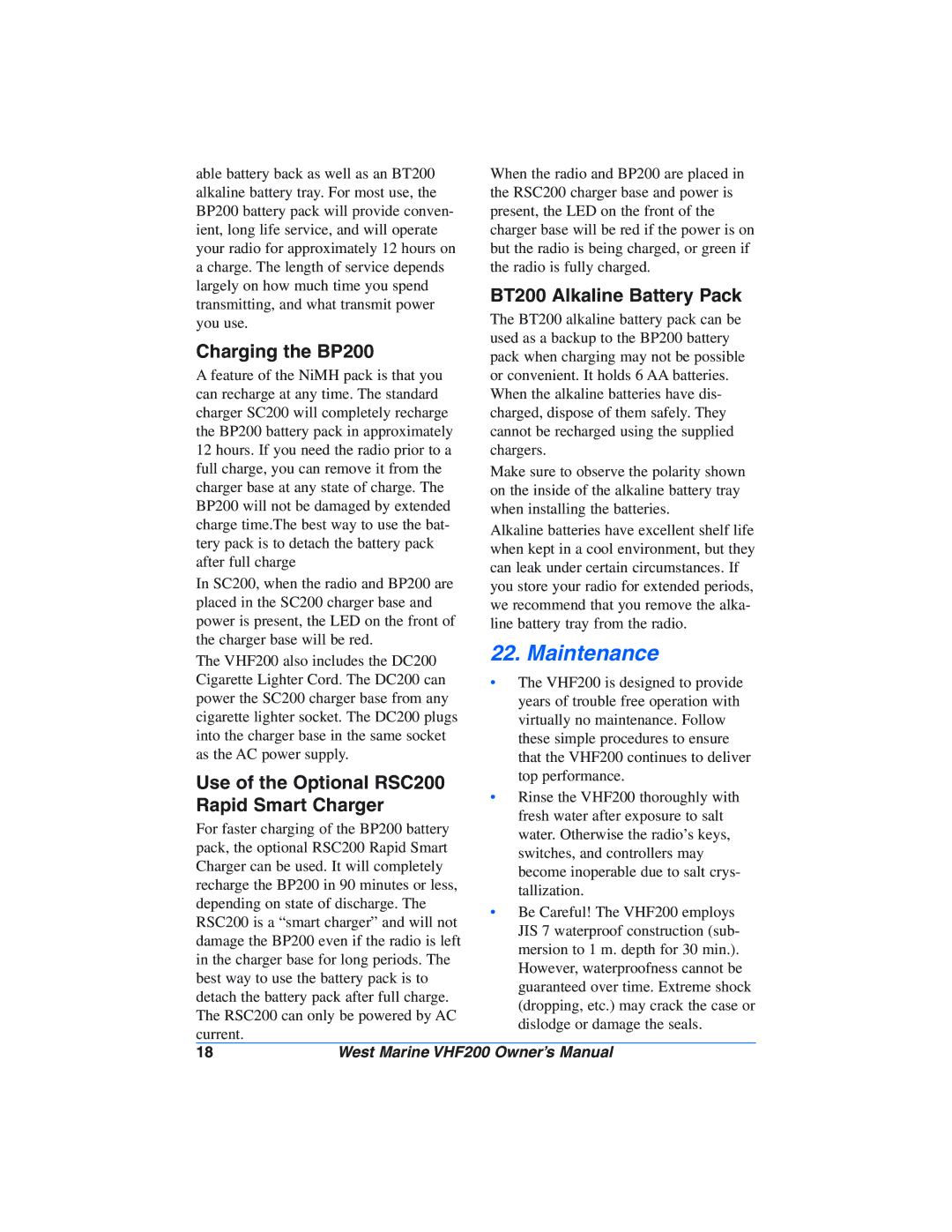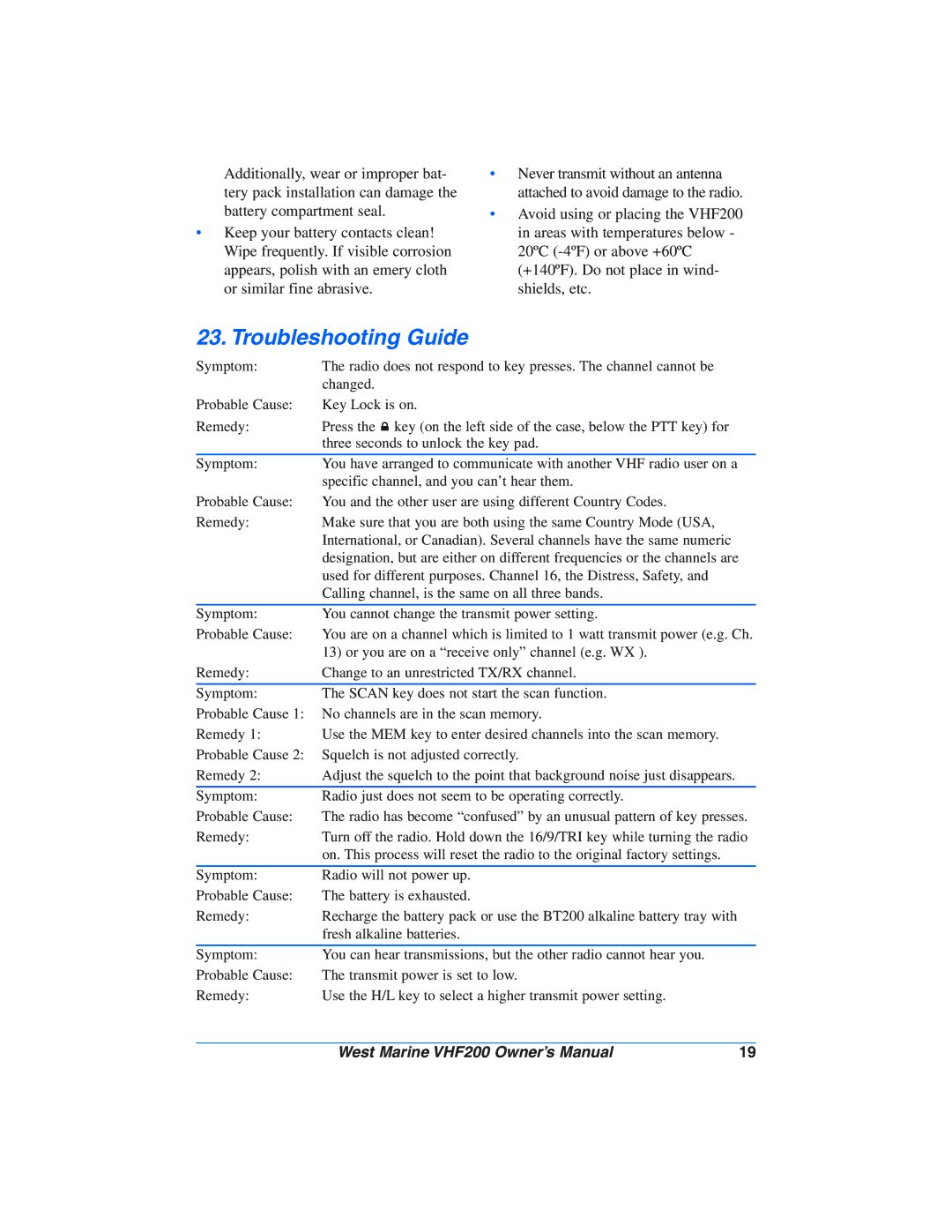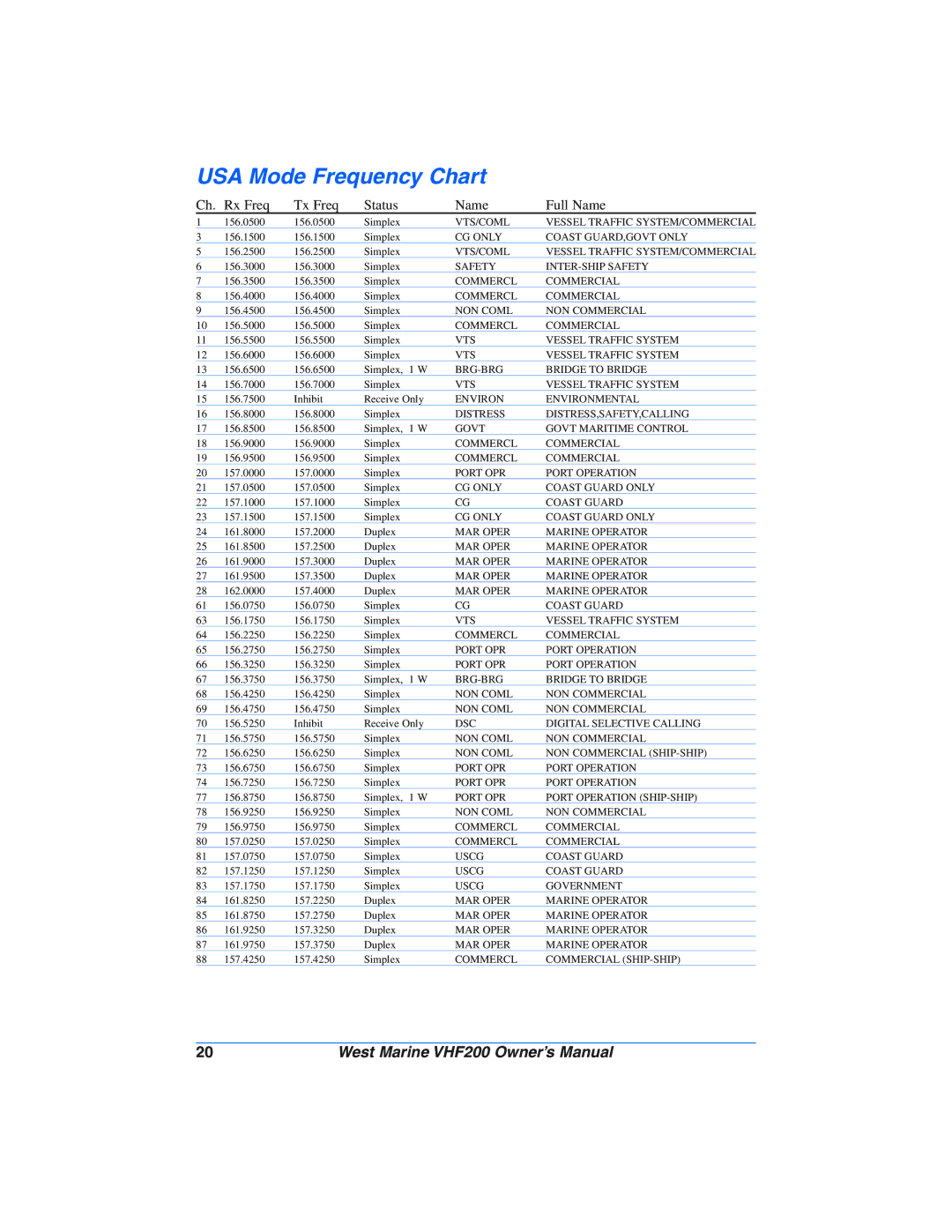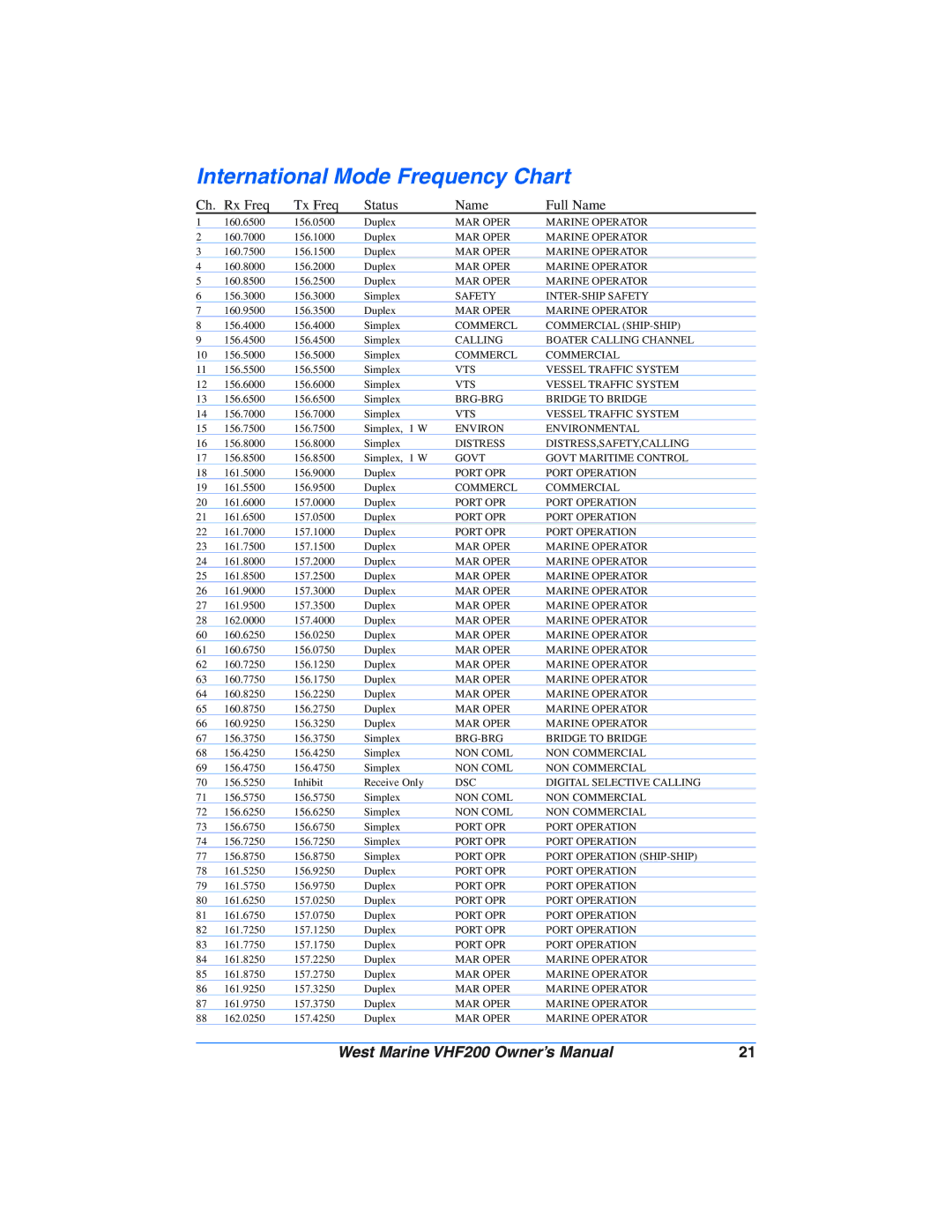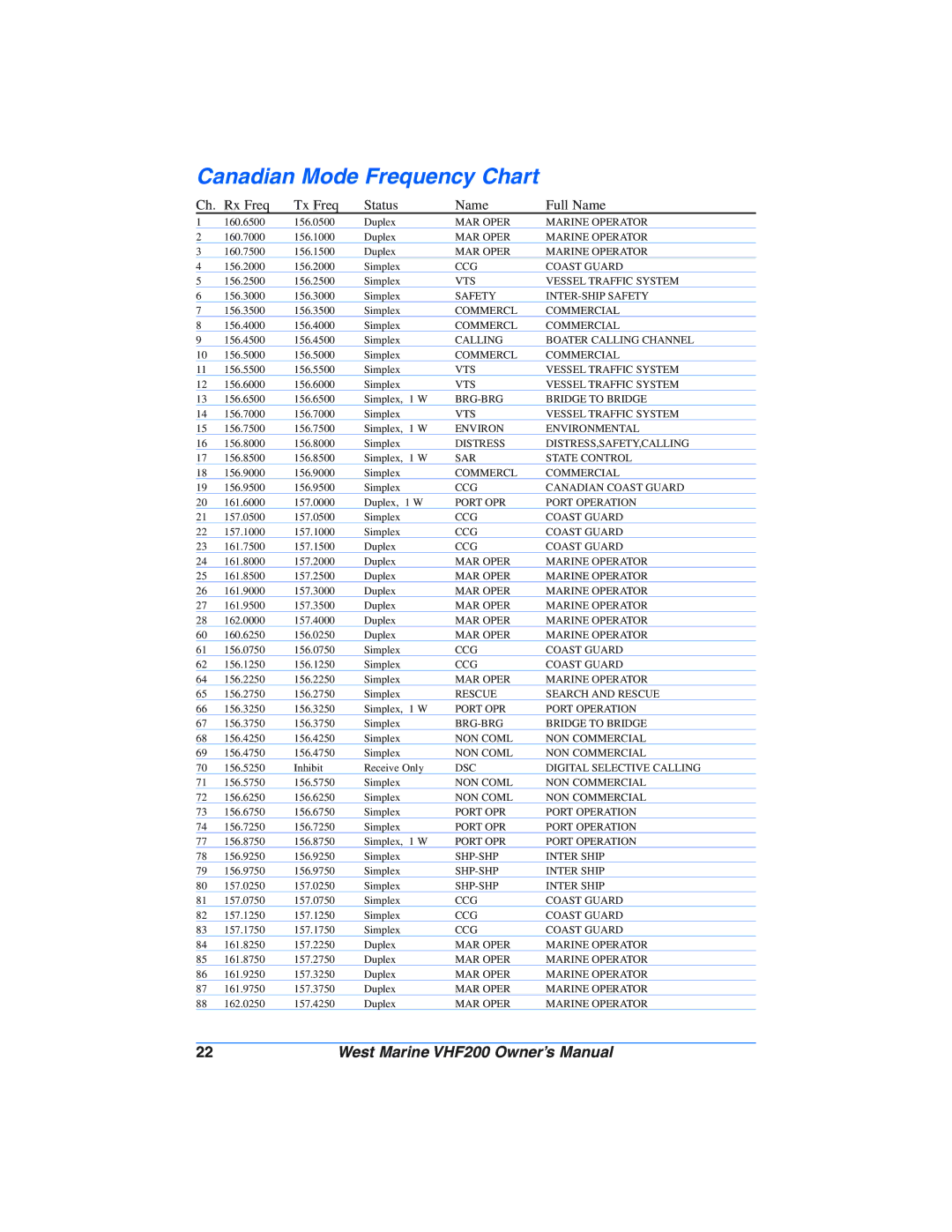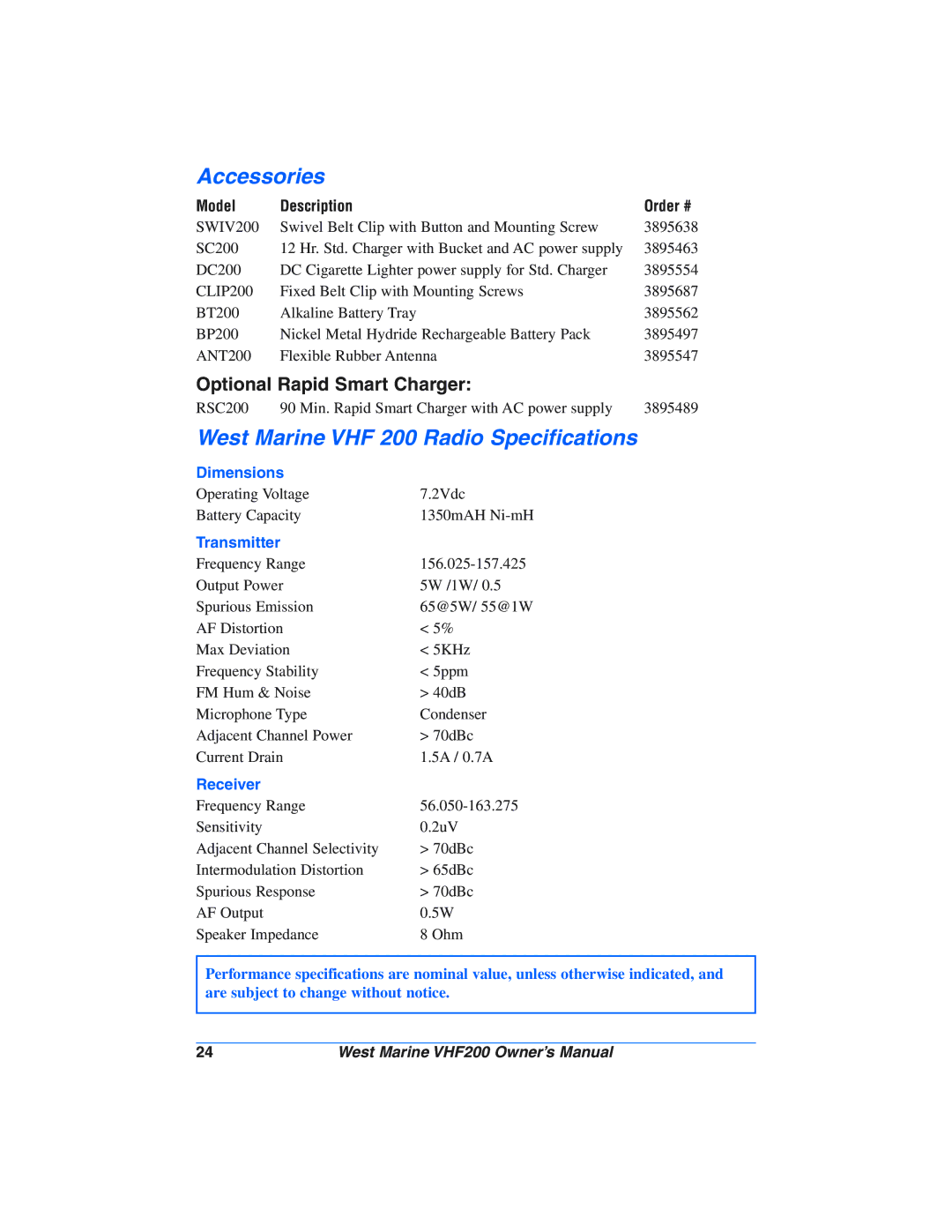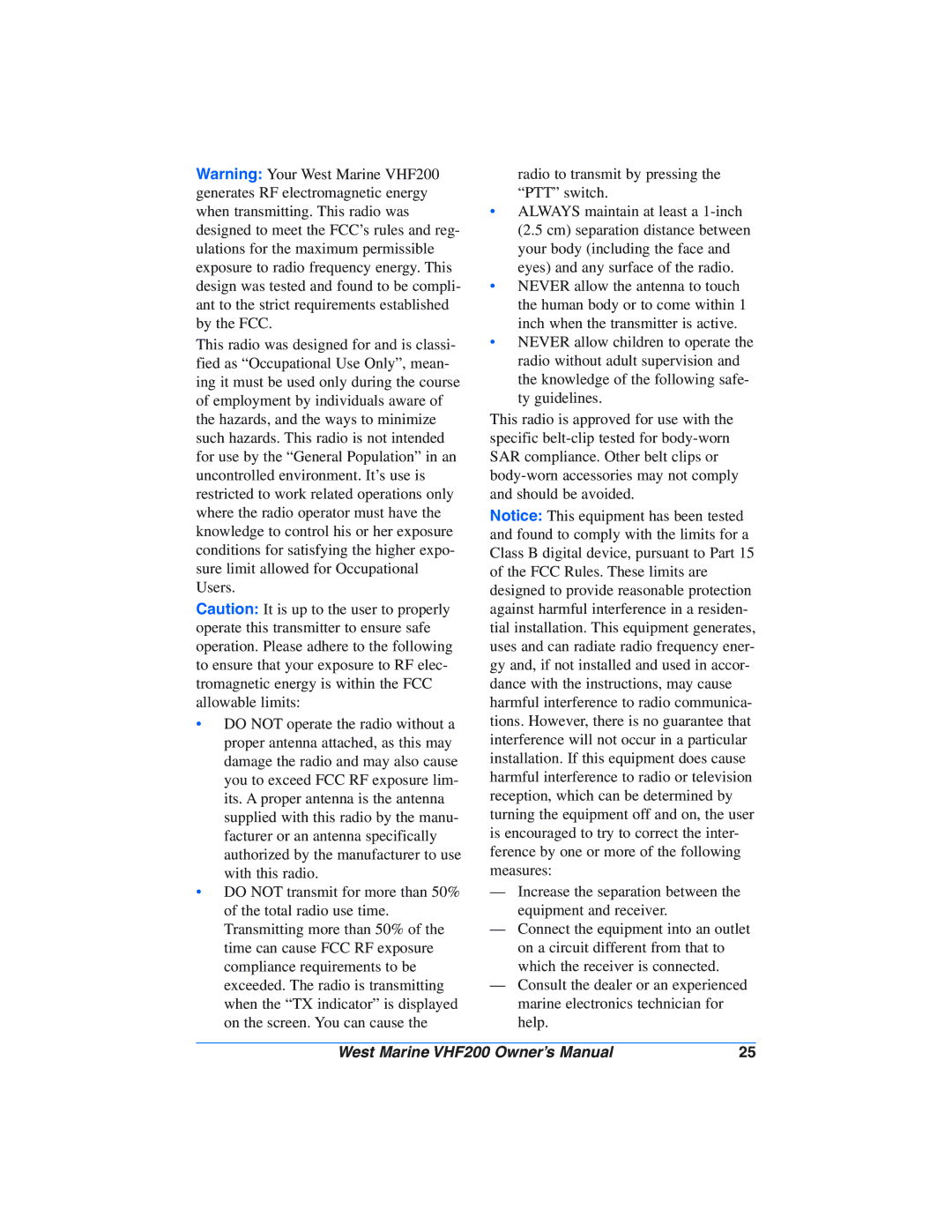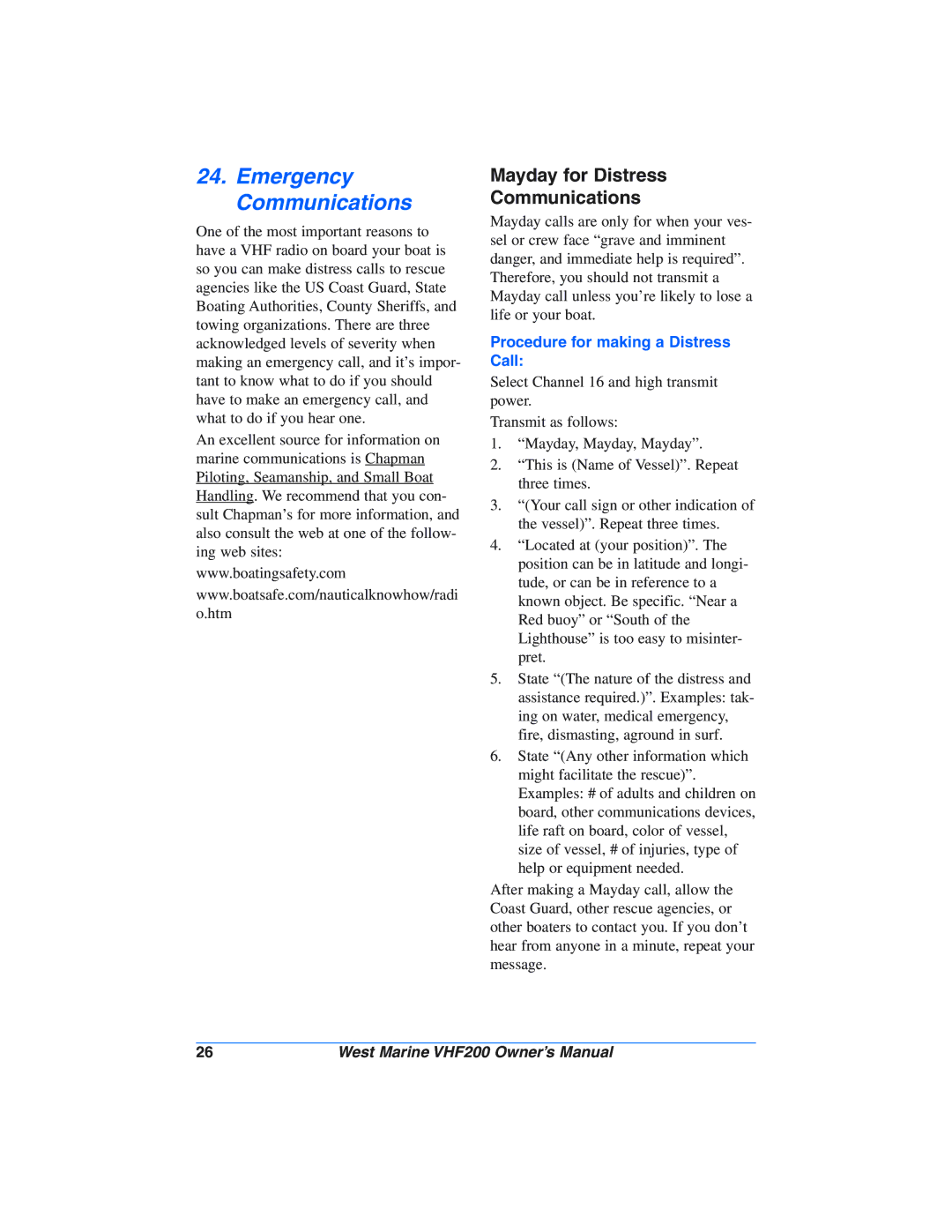
Warning: Your West Marine VHF200 generates RF electromagnetic energy when transmitting. This radio was designed to meet the FCC’s rules and reg- ulations for the maximum permissible exposure to radio frequency energy. This design was tested and found to be compli- ant to the strict requirements established by the FCC.
This radio was designed for and is classi- fied as “Occupational Use Only”, mean- ing it must be used only during the course of employment by individuals aware of the hazards, and the ways to minimize such hazards. This radio is not intended for use by the “General Population” in an uncontrolled environment. It’s use is restricted to work related operations only where the radio operator must have the knowledge to control his or her exposure conditions for satisfying the higher expo- sure limit allowed for Occupational Users.
Caution: It is up to the user to properly operate this transmitter to ensure safe operation. Please adhere to the following to ensure that your exposure to RF elec- tromagnetic energy is within the FCC allowable limits:
•DO NOT operate the radio without a proper antenna attached, as this may damage the radio and may also cause you to exceed FCC RF exposure lim- its. A proper antenna is the antenna supplied with this radio by the manu- facturer or an antenna specifically authorized by the manufacturer to use with this radio.
•DO NOT transmit for more than 50% of the total radio use time. Transmitting more than 50% of the time can cause FCC RF exposure compliance requirements to be exceeded. The radio is transmitting when the “TX indicator” is displayed on the screen. You can cause the
radio to transmit by pressing the “PTT” switch.
•ALWAYS maintain at least a
•NEVER allow the antenna to touch the human body or to come within 1 inch when the transmitter is active.
•NEVER allow children to operate the radio without adult supervision and the knowledge of the following safe- ty guidelines.
This radio is approved for use with the specific
Notice: This equipment has been tested and found to comply with the limits for a Class B digital device, pursuant to Part 15 of the FCC Rules. These limits are designed to provide reasonable protection against harmful interference in a residen- tial installation. This equipment generates, uses and can radiate radio frequency ener- gy and, if not installed and used in accor- dance with the instructions, may cause harmful interference to radio communica- tions. However, there is no guarantee that interference will not occur in a particular installation. If this equipment does cause harmful interference to radio or television reception, which can be determined by turning the equipment off and on, the user is encouraged to try to correct the inter- ference by one or more of the following measures:
—Increase the separation between the equipment and receiver.
—Connect the equipment into an outlet on a circuit different from that to which the receiver is connected.
—Consult the dealer or an experienced marine electronics technician for help.
West Marine VHF200 Owner’s Manual | 25 |
